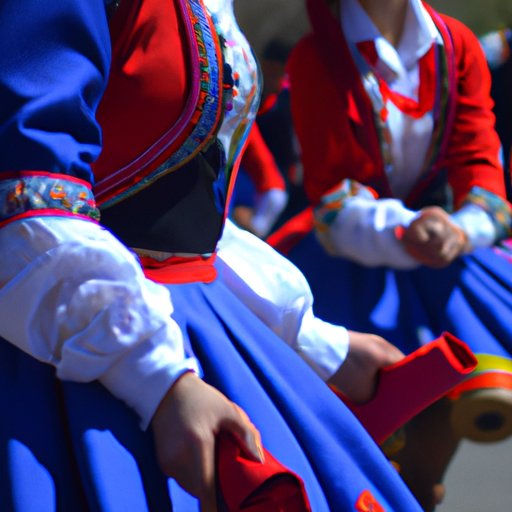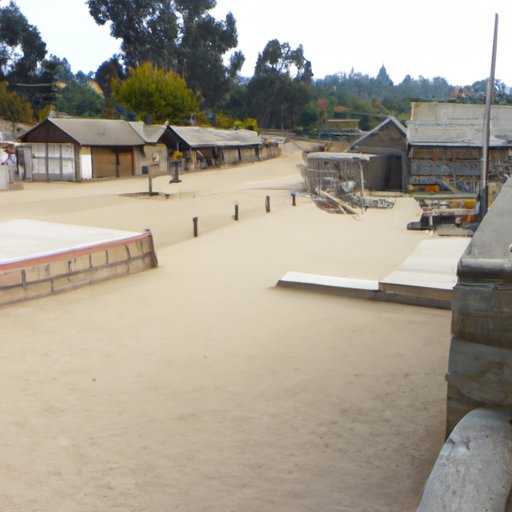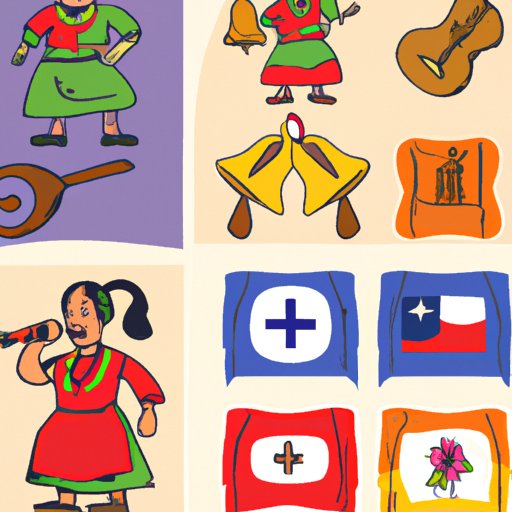Introduction
Chile is a country that has been shaped by many different cultures and traditions over the centuries, creating a unique and vibrant culture that is distinctly Chilean. This article will provide an exploration of the culture of Chile, looking at the traditions and customs, the influence of Spanish and Indigenous cultures, the art, music, cuisine, literature, religion and symbols, as well as the social structure and gender roles in Chilean society.

Exploring the Unique Traditions and Customs of Chilean Culture
The culture of Chile is strongly influenced by its geography and climate, with distinct regional variations and traditions. The northern regions of Chile are desert-like and sparsely populated, while the central valleys are home to the majority of the population. The south of Chile is more heavily forested and mountainous, with a cooler climate. Each region has its own unique cultural influences, from the traditional music of the Mapuche people in the south to the cowboy culture of the north.
Chilean culture has been heavily influenced by both Spanish and Indigenous cultures. The Spanish brought with them their language, religion, food, art and literature, which have all had a lasting impact on Chilean culture. Indigenous cultures such as the Mapuche, Aymara, Quechua and Rapa Nui have also had a significant influence, particularly in the south of the country.

Examining the Impact of Spanish and Indigenous Influences on Chilean Culture
Spanish is the official language of Chile and is spoken by the majority of the population. However, there are still many Indigenous languages spoken in some parts of the country, such as Mapudungun, Aymara and Quechua. Religion is an important part of Chilean culture, with the majority of the population being Roman Catholic, although there are also other religions present.
Family values are very important in Chilean culture, with strong emphasis placed on respect for elders and extended family members. Education is highly valued, and children are expected to work hard in school and help out with chores at home. Chilean families are often large and close-knit, with multiple generations living together.
Investigating the Art, Music, Cuisine and Literature of Chile
Chile has a vibrant and diverse art scene, with a number of internationally renowned artists such as Roberto Matta and Claudio Bravo. Chilean music is also varied and unique, ranging from traditional folk songs to modern hip-hop and rap. Popular musical genres include cumbia, cueca, huayno and Mapuche music.
Chilean cuisine is a mix of indigenous and European influences. Common dishes include empanadas, pastel de choclo, sopaipillas and humitas. Seafood is also popular, especially in coastal areas. Chilean literature is rich and varied, with authors such as Pablo Neruda, Isabel Allende and Gabriela Mistral being widely read.
Exploring the Role of Religion in Chilean Culture
Religion is an important part of Chilean culture, with the majority of the population being Roman Catholic. Protestantism is also present, particularly in the southern regions of the country. Other religions, such as Judaism and Islam, are not as widespread but are becoming increasingly visible in Chilean society.
Analyzing the Symbols and Celebrations of Chilean Culture
Chile has several national symbols, including the condor (the national bird), the llama (the national animal) and the copihue (the national flower). Popular celebrations include the Fiestas Patrias (Patriotic Festivals) in September, which commemorate Chile’s independence from Spain, and Carnival in February, which marks the beginning of Lent.

Understanding the Social Structure and Gender Roles in Chilean Society
Chilean society is divided into two main classes: the upper class and the lower class. The upper class is made up of wealthy landowners and business owners, while the lower class consists of poorer workers and farmers. Gender roles in Chile are traditionally quite traditional, with women typically taking on the role of homemaker and men taking on the role of breadwinner.
Conclusion
Chile is a country with a rich and vibrant culture, shaped by centuries of influence from Spanish and Indigenous cultures. Its culture is characterized by a strong sense of family values, a diverse range of art, music, cuisine and literature, and a variety of religious beliefs. There are also distinctive regional traditions, as well as national symbols and celebrations. Finally, the social structure and gender roles in Chilean society are largely traditional.
(Note: Is this article not meeting your expectations? Do you have knowledge or insights to share? Unlock new opportunities and expand your reach by joining our authors team. Click Registration to join us and share your expertise with our readers.)
